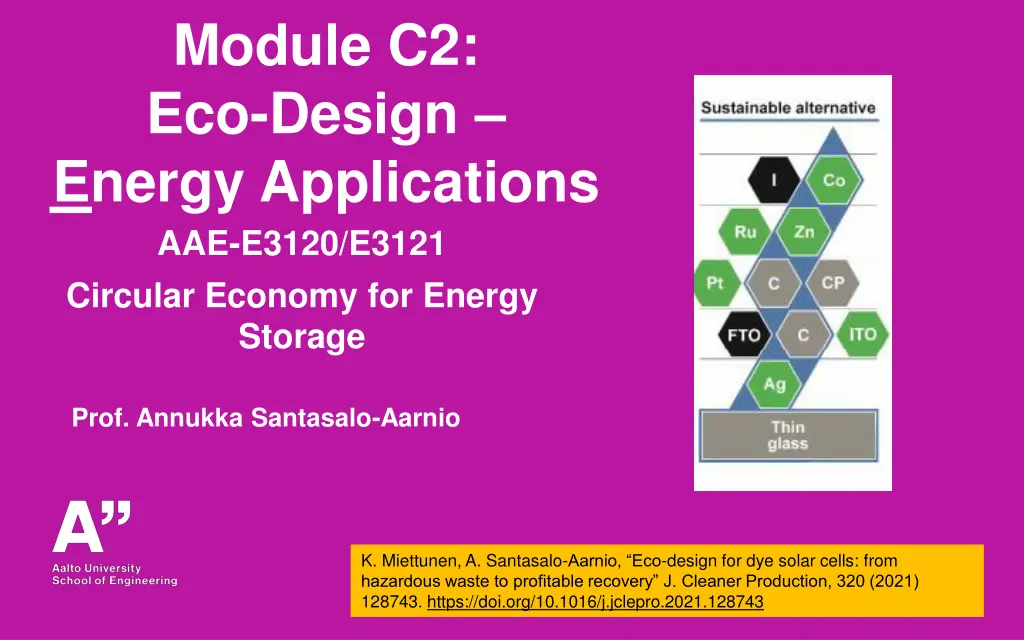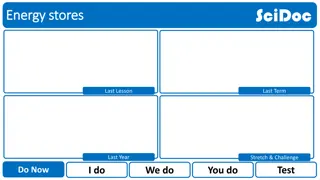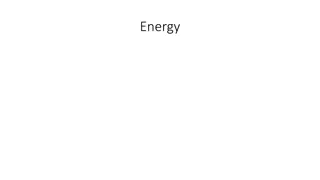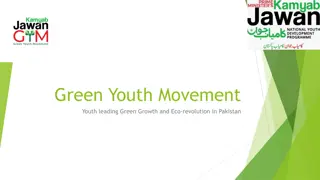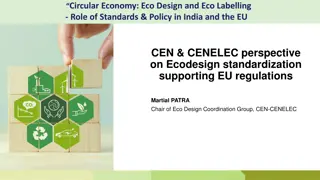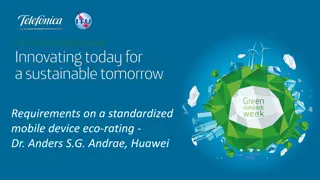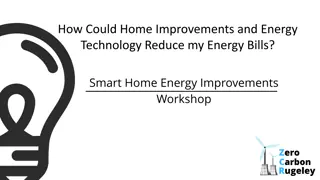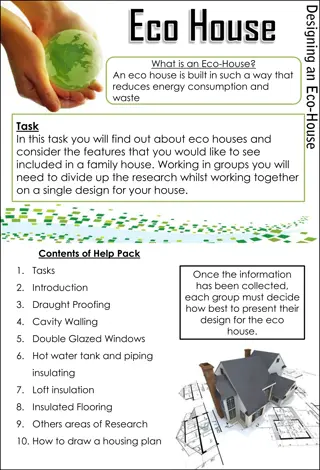Module C2: Eco-Design – Energy Applications
Explore eco-design concepts for energy storage systems, focusing on recycling approaches and material criticality. Learn to develop sustainable energy solutions and adhere to ecodesign regulations. Popular
Download Presentation

Please find below an Image/Link to download the presentation.
The content on the website is provided AS IS for your information and personal use only. It may not be sold, licensed, or shared on other websites without obtaining consent from the author.If you encounter any issues during the download, it is possible that the publisher has removed the file from their server.
You are allowed to download the files provided on this website for personal or commercial use, subject to the condition that they are used lawfully. All files are the property of their respective owners.
The content on the website is provided AS IS for your information and personal use only. It may not be sold, licensed, or shared on other websites without obtaining consent from the author.
E N D
Presentation Transcript
Module C2: Eco-Design Energy Applications AAE-E3120/E3121 Circular Economy for Energy Storage Prof. Annukka Santasalo-Aarnio K. Miettunen, A. Santasalo-Aarnio, Eco-design for dye solar cells: from hazardous waste to profitable recovery J. Cleaner Production, 320 (2021) 128743. https://doi.org/10.1016/j.jclepro.2021.128743
Learning outcomes Develop new design for recycling approach for energy storage application and justify with scientific argumentation Eco-design as a concept Case study -> multicomponent energy system What are critical materials/what can be lost?
Eco-Design Design for recycling WEE shrered waste image by Suvi Airola
Eco-Design Eco-design is a design that takes into consideration more ecological design at all parts of the product life: M.R.R.R Crul et al. (2009) Division of Technology, Industry and Economics.
Eco-Design Product development 1) Prevent (use of any material) 2) Reduce (amount of materials) 3) Replace Less environmentally hazardous (Pb, Hg ) Lower environmental footprint materials Difficult to recycle (the metal wheel) 4) Reduce Complexity (hybrid materials) 5) Easy dismantling for recycling 6) Guidelines for dismantling
Eco-Design Product lifetime 1) Increasing the product lifetime (durability) 2) Select process technology for materials 3) Logistics 4) Usage Guides for the customers on how to use Equipment properly 5) End-of-Life easy reuse/recovery/dismantling
Ecodesign regulation in EU Generic requirements for products: Generic requirements do not set limit values, but may require that: the product is 'energy-efficient' or 'recyclable' you provide information on how to use and maintain the product, to minimize its environmental impact you perform a lifecycle analysis of the product to identify alternative design options and solutions for improvement -> Energy storage systems not YET in this, but in the future will be part of the legislation Ecodesign requirements for products: https://europa.eu/youreurope/business/product- requirements/compliance/ecodesign/index_en.htm#inline-nav-1
Eco-Design In practice How do we address the challenges of Recycling multimaterial systems -> This needs to be done at the Design level of these systems Eco-design Li-ion battery Innovation at Materials for Renewable Energy course by students 2017 How to apply this for Energy storage systems?
Eco-design for dye solar cells: from hazardous waste to profitable recovery K. Miettunen, A. Santasalo-Aarnio, Eco-design for dye solar cells: from hazardous waste to profitable recovery J. Cleaner Production, 320 (2021) 128743. https://doi.org/10.1016/j.jclepro.2021.128743
Dye sensitized solar cell K. Miettunen, A. Santasalo-Aarnio, Eco-design for dye solar cells: from hazardous waste to profitable recovery J. Cleaner Production, 320 (2021) 128743. https://doi.org/10.1016/j.jclepro.2021.128743
Levels of Recycling Processes Recycle - Elements Recycle - Alloy Re-Firbish Re-Use Reviving/restoring performance (e.g. adding electrolyte to the cell) 1) 2) Reusing components (e.g. reutilizing counter electrode or FTO glass) 3) Recycling materials (e.g. recycling dye molecules) 4) Recovering raw materials (e.g. extracting Ru from the dyes) K. Miettunen, A. Santasalo-Aarnio, Eco-design for dye solar cells: from hazardous waste to profitable recovery J. Cleaner Production, 320 (2021) 128743. https://doi.org/10.1016/j.jclepro.2021.128743
Levels of Recycling Processes Lecture Journal Reflect these different levels for your own application what could these be? Reviving/restoring performance (e.g. adding electrolyte to the cell) 1) 2) Reusing components (e.g. reutilizing counter electrode or FTO glass) 3) Recycling materials (e.g. recycling dye molecules) 4) Recovering raw materials (e.g. extracting Ru from the dyes) K. Miettunen, A. Santasalo-Aarnio, Eco-design for dye solar cells: from hazardous waste to profitable recovery J. Cleaner Production, 320 (2021) 128743. https://doi.org/10.1016/j.jclepro.2021.128743
Material selection for Energy Systems K. Miettunen, A. Santasalo-Aarnio, Eco-design for dye solar cells: from hazardous waste to profitable recovery J. Cleaner Production, 320 (2021) 128743. https://doi.org/10.1016/j.jclepro.2021.128743
Material selection for Energy Systems 1) Recoverable indicating that this component is critical and is possible to recover with current recycling processes; 2) Unrecoverable indicating that this component is critical but is not possible to recover in this energy system with current methods; 3) Unrecoverable but abundant indicating that this material cannot be recovered with current methods, however, the material itself is not critical and can be lost in the recycling process; 4) Hazardous indicating that this material can cause hazard during the recycling process and its use should be avoided. Lecture Journal Classify the state-of-art materials in your application with these categories. K. Miettunen, A. Santasalo-Aarnio, Eco-design for dye solar cells: from hazardous waste to profitable recovery J. Cleaner Production, 320 (2021) 128743. https://doi.org/10.1016/j.jclepro.2021.128743
Eco-design on material combinations K. Miettunen, A. Santasalo-Aarnio, Eco-design for dye solar cells: from hazardous waste to profitable recovery J. Cleaner Production, 320 (2021) 128743. https://doi.org/10.1016/j.jclepro.2021.128743
Eco-Design For your own application Can be at any part of the value chain M.R.R.R Crul et al. (2009) Division of Technology, Industry and Economics.
Take a home message For Sustainable Energy Storage devices eco-design is needed.
